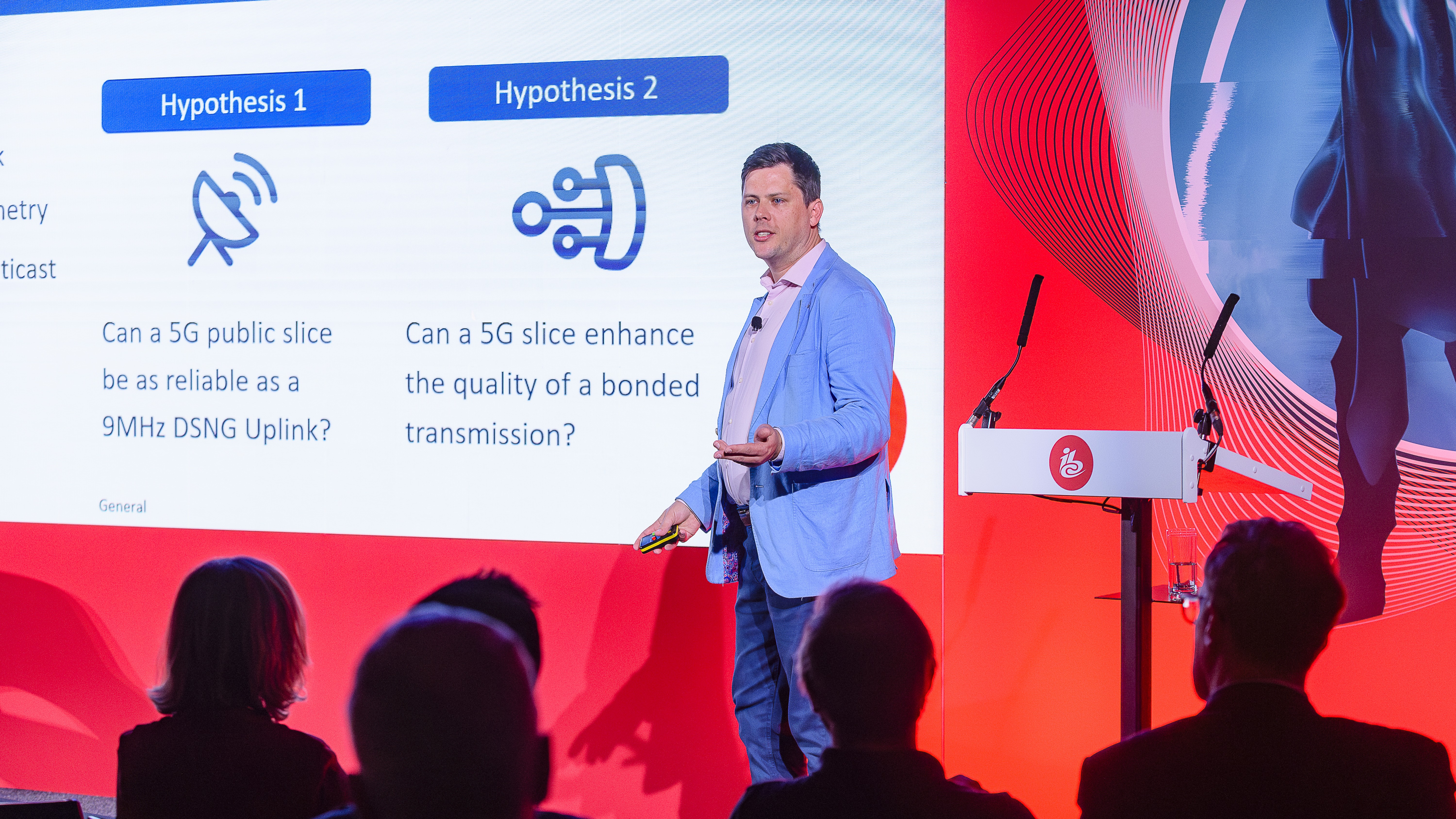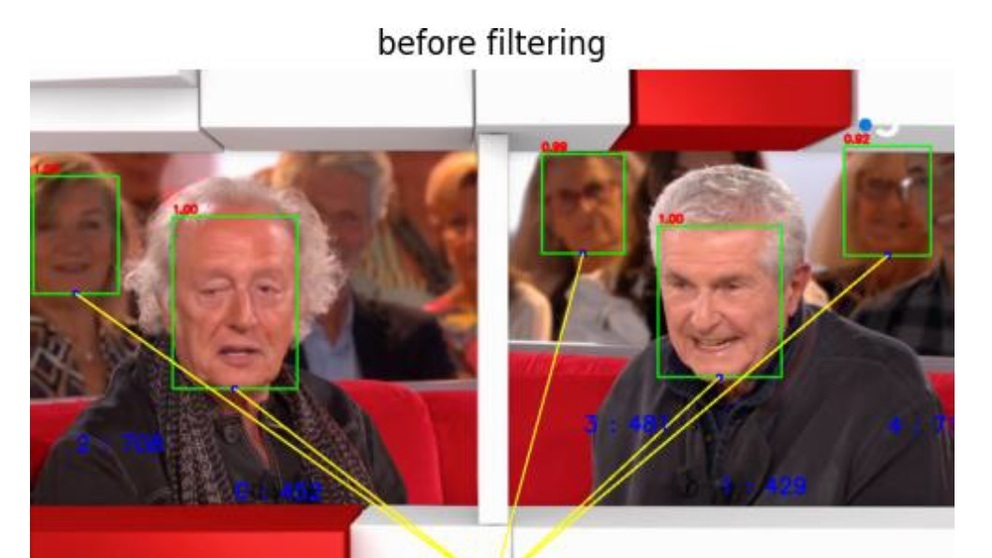Pressure from Wall Street and the weak economic landscape could drive further M&A among US media giants, but weather the next 24 months and they might all survive, reports Adrian Pennington.
The era of major media consolidation is entering a new phase. While we have seen significant M&A in recent years, such as Disney’s acquisition of Twentieth Century Fox, the 2019 merger of CBS and Viacom and Discovery’s acquisition of WarnerMedia from AT&T, the landscape is still changing, and further consolidation remains possible.
There are several factors that have led to the point where consolidation is again on the minds of both investors and media CEOs.

“There is a lot of pressure from investors now for further consolidation to reduce the number of players, to build scale and, for some companies, to build expertise in advertising to feed the monster that is the demand for streamed content,” said Guy Bisson, Executive Director & co-founder at Ampere Analysis.
Media companies must do all this without exponentially growing their content spend which has been the overriding trend for the last ten years.
Consolidation Cycles
The history of the industry over the last three decades has been of cycles and waves of consolidation. Broadly, this has been driven by two different strategies: vertical and horizontal.
In the mid-nineties when cable and satellite companies began to merge with content owners they were doing so in the form of vertical integration in order to control the value chain through the cycle of content windows.
More recently, horizontal integration has been favoured to achieve scale in programming and distribution because of the rise of streaming and the globalisation of content distribution. It’s why Disney acquired 21St Century Fox in 2017 (for $71 billion) and is the rationale behind smaller scale consolidation such as the emergence (since 2004) of ITV Studios which is amalgamated from dozens of production and distribution companies into an entity with scale and global potential.
“We’re now in a phase where streaming has started to saturate and subscriptions have hit a ceiling,” Bisson said.
“It’s been a phenomenal few years during which all major studios launched DTC services, coinciding with a boom in demand which was artificially inflated by lockdown. The pandemic accelerated an outcome that would have occurred a few years down the line. Coming out of that we find a very crowded market in which there is a base dominant player (Netflix) and global markets are saturating.”
Evidence from Ampere’s consumer data shows that the number of paid streaming services taken per household has been flat for more than two years. Spooked by Netflix’ profit slump for two straight quarters in 2022, there’s been a cooling of opinion in Wall Street where investors no longer see streaming as profitable a business as it once was. Bisson:
“I don’t agree with all the doom and gloom around streaming but taken in the round all of these factors lead to the thesis that not every major player existing today can survive. Therefore, they must consolidate.”
Some estimates claim as much as 90% of U.S. media is controlled by just six companies. They are Comcast, Walt Disney, Warner Bros. Discovery, Paramount Global, Sony and Fox. All are major content companies with a global streaming footprint.
Big Six to Big Three?
Consolidation by its nature concentrates power in the hand of the few – a factor of globalisation and the need for scale. Talk at TV sales market Mipcom last month was that this could reduce to five or even just three.
“Three seems far too few especially now advertising is coming back to the fore as a serious revenue generating alternative,” said Bisson. “Advertising opens up additional opportunities to maintain scale for some of these companies to retain their independence.”
So who survives? Well, although not included in the ‘top six’ media companies by revenue, Netflix seems to hold top spot among analysts. The $180 billion company reported a profit of $1.68bn on revenue of $8.5bn in the last quarter, beating market expectations and swelling subscribers to 247 million.
“Netflix have a base position in the home streaming bundles,” Bisson said. “All the data we get, such as what services consumers take, in what combination and what happens when they churn, suggests that Netflix is a keystone of the streaming bundle. That’s the given, then you are laying other services on top.
“That doesn’t mean no-one would buy Netflix and be part of a consolidation push but Netflix as a service or product is in a very strong position that is unassailable. Unless they royally screw up their content offer.”
Perhaps it is better to ask which of the major media conglomerates is in the weakest position. Each has taken a different strategic approach which insulates them to a degree.
“Of all the studios it is Disney that has led on streaming (Hulu, Disney+ and Disney+ Star) and doubled down on streaming as the priority for content. They were the first to start seriously thinking of the streaming window and changing attitudes to theatrical windows, transactional windows. Disney’s sales and distribution and licencing of content have all changed toward a streaming first model in the last 12 months.”
Disney’s reported divestment of its India operations to local rival Reliance Industries is a logical move, say Ampere.
“While streaming has expanded globally there’s a realisation that only about 70 countries actually deliver decent value. Clearly, there’s a huge opportunity in India or China but the customer value in DTC is so low there to make it difficult to achieve succeed especially against local competition. In order to get to profitability with the pressure being put on by Wall Street focusing in on the core market makes absolute sense.”
Despite growing its streaming business (Disney+ now reaches 112.6m customers globally), Disney’s focus is on cost cutting and mega-bundles having just reached a deal with Comcast to acquire NBCU’s 33% stake in Hulu for $8.6bn.
Ampere describes Disney’s strategy as focused on a series of core pillars: reaching streaming profitability; developing ESPN as a fully-fledged direct-to-consumer offering; a new integrated entertainment bundle domestically; and revamping the studio business. All of these strategies feed one another and feed the streaming window.
As it rolls out international uber-streamer Max, WarnerBros. Discovery shares with Disney an aim for content breadth across multiple genres targeting multiple demographics. “They are both generalists and share a similar approach,” Bisson said.
“We are, of course, back to a traditional pay TV strategy of providing content for all the family in a cost-effective tier to increase subscriber retention. Disney (and arguably Warner Bros. Discovery) are the first to get there, but others will all follow. It’s a strategy we said was essential to the future of streaming back in 2019 and, had the pandemic streaming boost not happened, surely would have been necessary sooner.”
WBD saw its stock fall on release of its third quarter figures this month. The company saw 700,000 fewer subscribers to Max at 95.1 million, below the analyst forecast of 95.4 million and blamed the tough advertising environment as well as repercussions from the Hollywood strikes.
In addition to owning Paramount+, Paramount Global holds traditional TV assets including CBS, Nickelodeon and a slew of other cable networks, as well as Paramount movie studios. “Paramount are perhaps one tier down [from Disney and WBD] but have a much larger content library than people give them credit for,” said Bisson. He thinks Paramount is converging toward a mixed strategy centred on Paramount+ as well as payTV and licenced content.
In its recent Q3 figures, Paramount reported a 38% increase in revenue with 2.7 million net additions to Paramount+ bringing its subscriber count to 63 million. The company also narrowed losses in its streaming segment to $238m from $343m a year ago.
Because of its Comcast parentage, NBCUniversal is the most entrenched in payTV infrastructure. Comcast owns Sky, the largest payTV operator in Europe. Revenue at the company’s Peacock streaming service rose 64% from a year earlier with paid subs increasing by four million to 28 million but the company still expects Peacock to make a $2.8 billion loss this year.
“While WBD and Paramount have a mixed strategy that still preserves to some degree the old business lines this is fundamentally the case with NBCU because of the heritage of its infrastructure-based business.”
Better times ahead
However, Ampere’s analysis suggests that “from the perspective of their direct businesses” all the major media content owners and distributors are on the verge of profitability within 24 months.
“At which point market sentiment will shift again toward streaming and some of the pressures for consolidation will begin to wane,” he said. “The impetus for consolidation will wither somewhat in about 18 months. The question is whether there will be consolidation in the interim.”
Big Tech Big Pockets
The driver is likely to be from Big Tech seeking to build content scale through acquisition more so than studio on studio consolidation.
Amazon, for example, is lacking an advertising led streaming service yet momentum in the market has shifted heavily towards this.
“All the Studios been in the advertising channel business for decades but tech companies don’t have a longform TV advertising ad sales heritage that is absolutely essential to weather the market changes,” remarked Bisson. “People have reached the ceiling in terms of their streaming stack. They don’t want to pay for more services. That’s why, as much as the content, advertising expertise is now a commodity.”
When Netflix launched its premium AVOD tier a year ago this December it did so with sales infrastructure from Microsoft in a partnership which benefits the tech giant as much as the streamer. There are now 15 million global monthly active users on the tier.
Apple, with its focus on hardware sales, remains somewhat of an enigma. “They have a very specific strategy which has been about building a small volume of very high budget and highly curated content,” Bisson said. “It has worked pretty well for them to date.”
Apple also made a first serious foray into sports in a ten-year deal to live stream all MLS games, which some see as a prelude to a multi-billion dollar bid for Disney’s sport network ESPN.
“Apple is positioned as a premium product much like every other Apple product. They could have bought MGM in 2021 when Amazon stepped in [paying $8.45bn]. It’s nowhere near a certainty that Apple needs to acquire a large production entity.”
Will AI swing balance of power?
Into this mix comes the power of Generative artificial intelligence which all the studios are developing models for inhouse.

According to media commentator Peter Csathy it’s the Big Tech companies that will ultimately make the most money and have the most control and power, not Hollywood.
“Let’s look at the realities of economics,” he said in a recent webinar. “Big Tech has multitrillion-dollar valuations. Whereas the biggest traditional media company out there, which is Disney, has $150 billion market valuation. Ultimately, Big Tech is the big winner here. And I would say that Big Tech is the big winner on the backs of creators, artists, musicians.”
Certainly, creators, artists and musicians can learn to leverage AI for their benefit, he said but, “the scale of it all really inures to the benefit of Big Tech.”
Bisson isn’t so sure. He views AI as a tool for all and open to anyone to use including the studios. “It is not a singular unique advantage for those developing AI.
“AI has many interesting uses for media companies and one of the things that clearly needs to be done is better integration of different services, better content discovery, content recommendation, navigation between services and ad targeting. That is what AI should be very good at solving. It always comes back to who controls the data that is necessary for that AI to function. And just now no one is particularly eager to share the information required to allows that to happen.
“Frankly the technology is already here for that to happen without AI. It hasn’t happened because of the silos of data and protection of audience data.”
He notes that there’s long been a theory in the media business that if you own the device to watch it on you therefore become the dominant platform – but that this has never succeeded.
“I’m not going to say ‘Content is King’ (because anyone who repeats that cliché deserves a slap) but if you don’t have content you don’t have a service and it doesn’t matter what AI you’ve got.”
.jpg)
AI through the looking glass: Digital natives
When it comes to AI, the M&E industry should take a more active interest in the views of its young people if it wants them to remain part of it, writes James McKeown.

NAB preview: Agentic AI poised to steal the show
New imaging technologies, AI creative mates and wrestlers await visitors to Las Vegas while America’s free press is under attack.

Inside virtual production’s latest processing and toolset innovations
Advances in GPU capability and algorithms are among the developments allowing ‘more to be done with less’ as virtual production technology and techniques continue to evolve, writes David Davies.

Content Everywhere: Getting (more) personal in the AI era
Content Everywhere companies cite service personalisation as an area in which artificial intelligence (AI) and data will play an increasingly transformative role in the highly competitive streaming market.
/Hero Shot - LED Wall at NFTS Virtual_Launch_0128 (1).jpg)
Level up: Addressing the skills gap in virtual production
As virtual production technology becomes more ubiquitous, the need for real-world training and development for professionals of all levels becomes paramount. John Maxwell Hobbs explores the education and training programmes on offer from academic institutions and industry organisations.





